
views
Applying Henna as a Foundation

Buy 300g (11oz) of henna powder to dye shoulder-length hair. Applying henna before the indigo will give your hair a natural black color. Without henna, indigo may turn your hair an odd shade of greenish-blue. The exact amount of henna powder you’ll need depends on the length of your hair: Short hair (like pixie cuts): use 100g (3.5oz) of henna powder Collar-length hair: 200g (7 oz) Shoulder-length hair: 300g (10.5 oz) Waist-length hair: 500g (18 oz) Check the product label to make sure your henna is made from all-natural ingredients. Some companies may use artificial products that can damage hair.
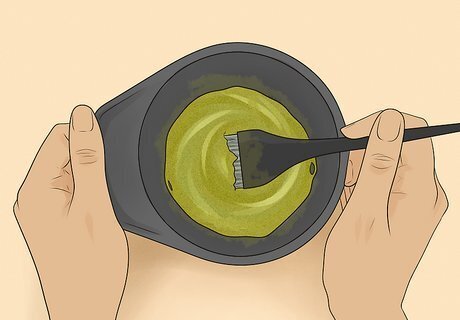
Mix henna powder and lemon juice in a small bowl. Place the powder in the bowl, then add 1 squirt of lemon juice and stir with a spoon or hair dyeing brush. Keep adding squirts and stirring until the mixture has a thick, sticky consistency, like mashed potatoes. Then wrap the bowl in plastic wrap and let it sit at room temperature (around 70°F, or 22°C) for 12-24 hours. Use a cheap plastic bowl to mix your henna since it will get permanently stained. After 12-24 hours, your henna is ready to use.
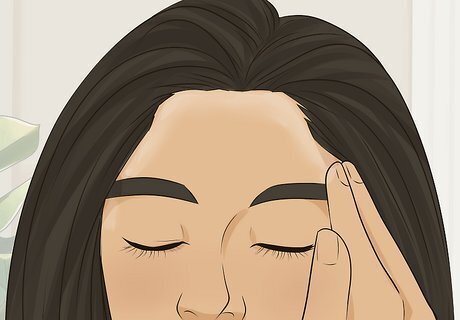
Apply petroleum jelly to your ears and hairline to prevent stains. Henna will stain your skin, including your scalp, ears, and neck. While wearing latex gloves, rub a thin layer of Vaseline or other petroleum jelly on your forehead, temples, upper neck, and behind your ears. The oils in the jelly will act as a barrier, preventing the henna from touching your skin. If your hair is dirty, wash and dry it before applying the petroleum jelly. Make sure your hair is clean before moving on to the next steps.

Spread the henna mixture evenly throughout your hair. Use hair sectioning clips to part your hair into 2-3 even chunks. Then put on clean latex gloves, place a golf-ball-sized chunk of henna in your palm, and smear it against your hair. Start with the back of your head and slowly work your way forward. Massage the mixture into your hair and scalp until all your hair is completely coated. The wet henna will make your hair look green and muddy. This is normal and will wash out with water. Wear an old shirt while applying the henna to avoid staining any nice clothes. If you accidentally get henna on your skin, immediately wash it off with soap and water so it doesn’t stain.

Cover your hair with plastic and wait 2-4 hours. Use a plastic shower cap, or wrap your hair using plastic food wrap. Make sure the plastic is tightly wrapped around your hair to prevent the henna from drying out. Your hair will slowly absorb the henna dye over the next few hours. For gray hair, leave the henna in your hair overnight. Place a towel on your pillow to avoid staining the pillowcase.
Preparing Your Hair and Workspace

Wash and dry your hair to remove the henna. After leaving the henna in your hair for 2-4 hours, wash your hair with warm water, but don’t use shampoo or conditioner. Scrub thoroughly to remove dry henna from your roots and scalp. Then dry your hair naturally or with a blow dryer until its slightly damp to the touch. If you have very long hair, you may need to scrub your hair for several minutes to get all the henna out.

Use hair clips to divide your hair into three sections. Grab the hair at the top of your head from your forehead to your crown and comb it backward. Then twist it and place it in a hair clip. Repeat this process for the hair from your crown to the top of your ears. Leave the hair from the top of your ears to the bottom of your neck unclipped. Comb your hair thoroughly before sectioning to remove any knots.

Place towels or paper on the floor where you’re dyeing your hair. This will prevent the indigo from dripping on the floor. Make sure the floor in your work area is completely covered. Indigo can easily stain tile, wood, carpets, furniture, pets, and so on. If possible, dye your hair in your bathroom shower to make cleanup easier.

Rub petroleum jelly on your ears and hairline. Indigo will stain your skin, just like henna. Use a cotton ball to apply a layer of Vaseline or other petroleum jelly on your ears, upper neck, forehead, and temples. This creates a barrier that keeps the dye away from your skin. Avoid getting petroleum jelly on your hair, since this could prevent the hair follicles from absorbing indigo.
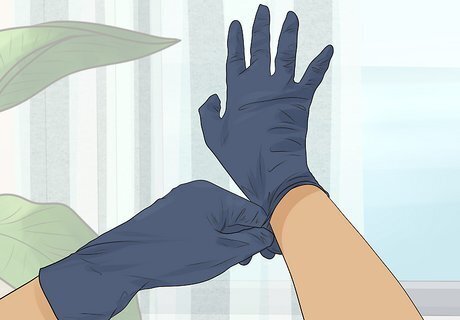
Put on clean gloves to avoid dyeing your skin. Indigo can easily turn your fingers blue. To avoid this, put on a pair of latex or rubber gloves before applying indigo. Use nitrile gloves if you are allergic to latex.
Applying Indigo to Your Hair
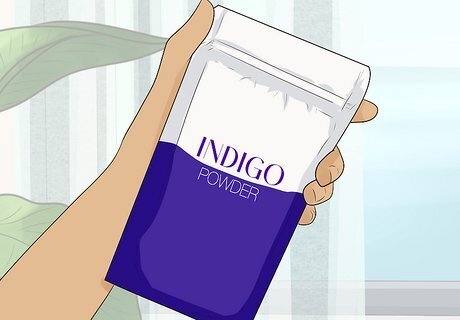
Buy 100g (3.5oz) of indigo powder for every 6 in. (15cm) of hair. For instance, if your hair is roughly 12 inches (30 cm) long, buy 200 g (7 oz) of indigo powder. You can purchase indigo powder online or from a local beauty supply store. To measure your hair’s length, grab a few strands from one spot and gently pull them up from your scalp. Use a ruler or tape measure to determine the length.

Mix your indigo with warm water in a small bowl. Add indigo powder to the bowl. Then add 1 tsp (5 mL) of water and mix thoroughly. Continue adding 1 tsp (5 mL) of water at a time and mixing until the indigo has the consistency of yogurt: creamy, thick, but not runny. Then set the indigo aside for 15-20 minutes. If your hair is naturally gray, add 1 tsp (7 g) of salt for every 50 g (1.75 oz) of indigo powder.
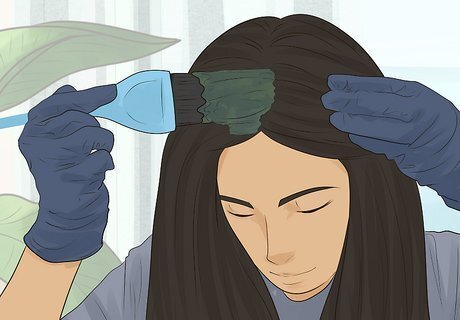
Use a hair dyeing brush to apply the indigo to your hair. Begin with the section of hair on the top of your head. Apply the dye to the roots and slowly work your way to the tip of your hair. If you don’t have a brush, use a spoon to apply the mixture, then smear it into your hair with your hands. Keep your gloves while applying the indigo, even if you’re using a brush. Use caution to avoid dripping dye onto your clothes.

Wrap your hair in plastic for 2 hours. Use a plastic shower cap or plastic food wrap. Make sure your hair is completely covered. This will help your hair absorb the indigo. You can also wrap your hair in a cotton cloth, though the cotton will get stained.
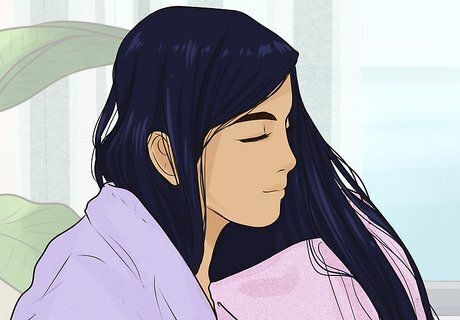
Rinse off the indigo paste with cool water. Remove the wrap and wash your hair using only cool water. Avoid using shampoo since this will remove the dye. Once all the paste is gone, gently pat your hair with a towel to remove excess water, then allow it to air dry. The indigo will take a few days to oxidize and turn fully black. Wait 2 days before washing your hair with shampoo or conditioner. Don’t be alarmed if your hair looks lighter than expected at first. The color will darken after a few days.












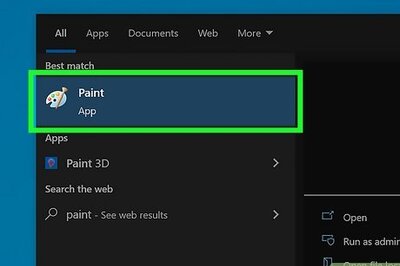







Comments
0 comment